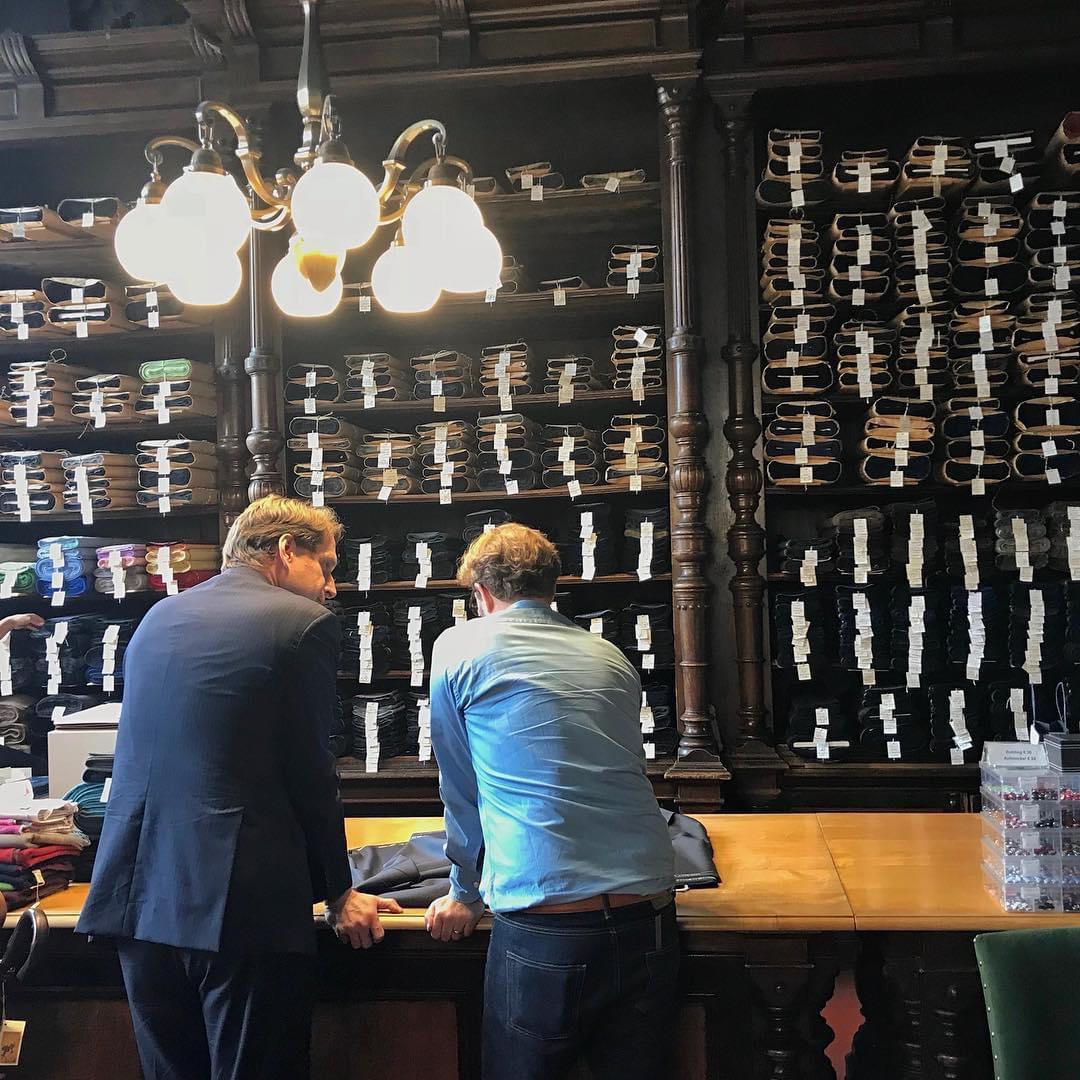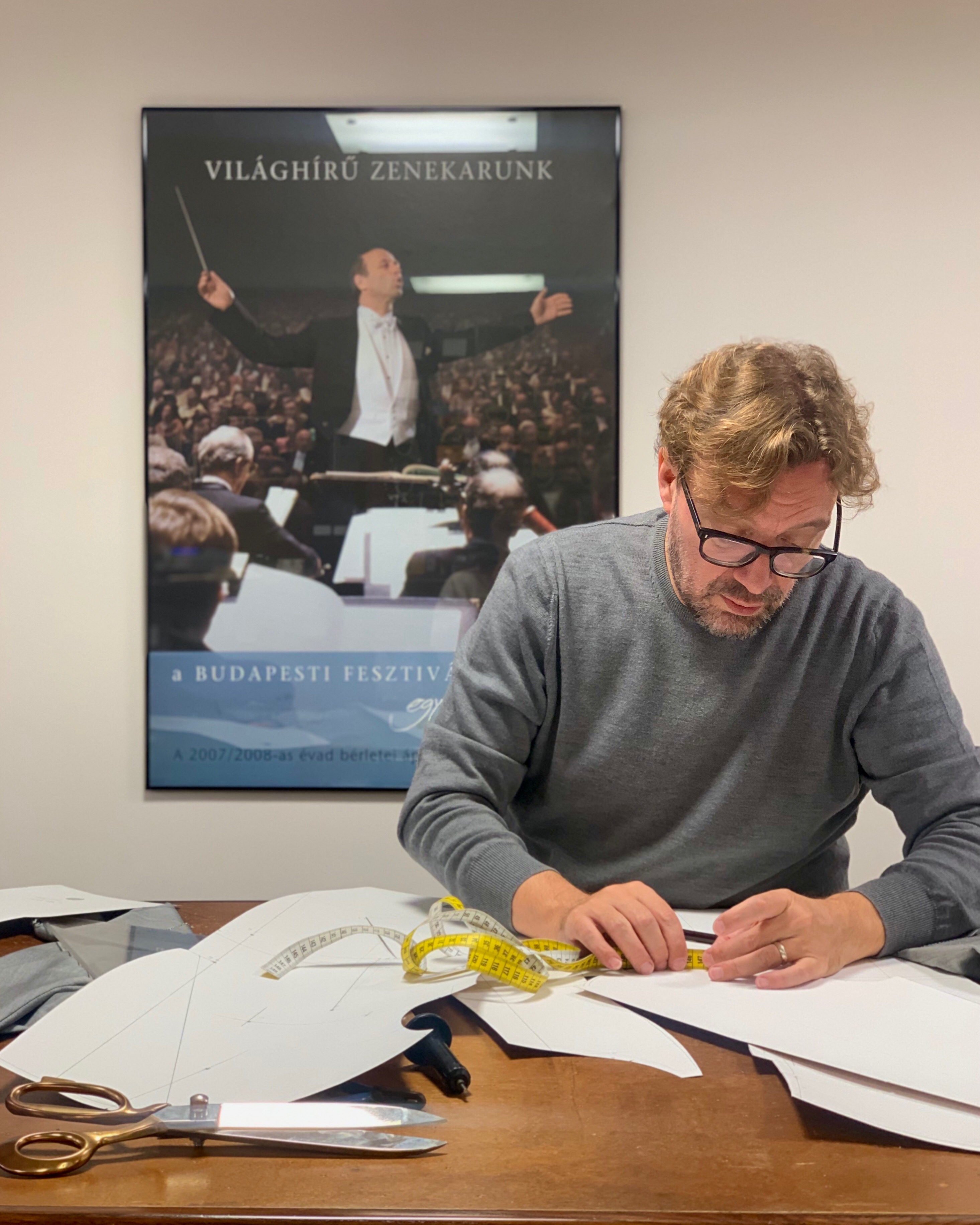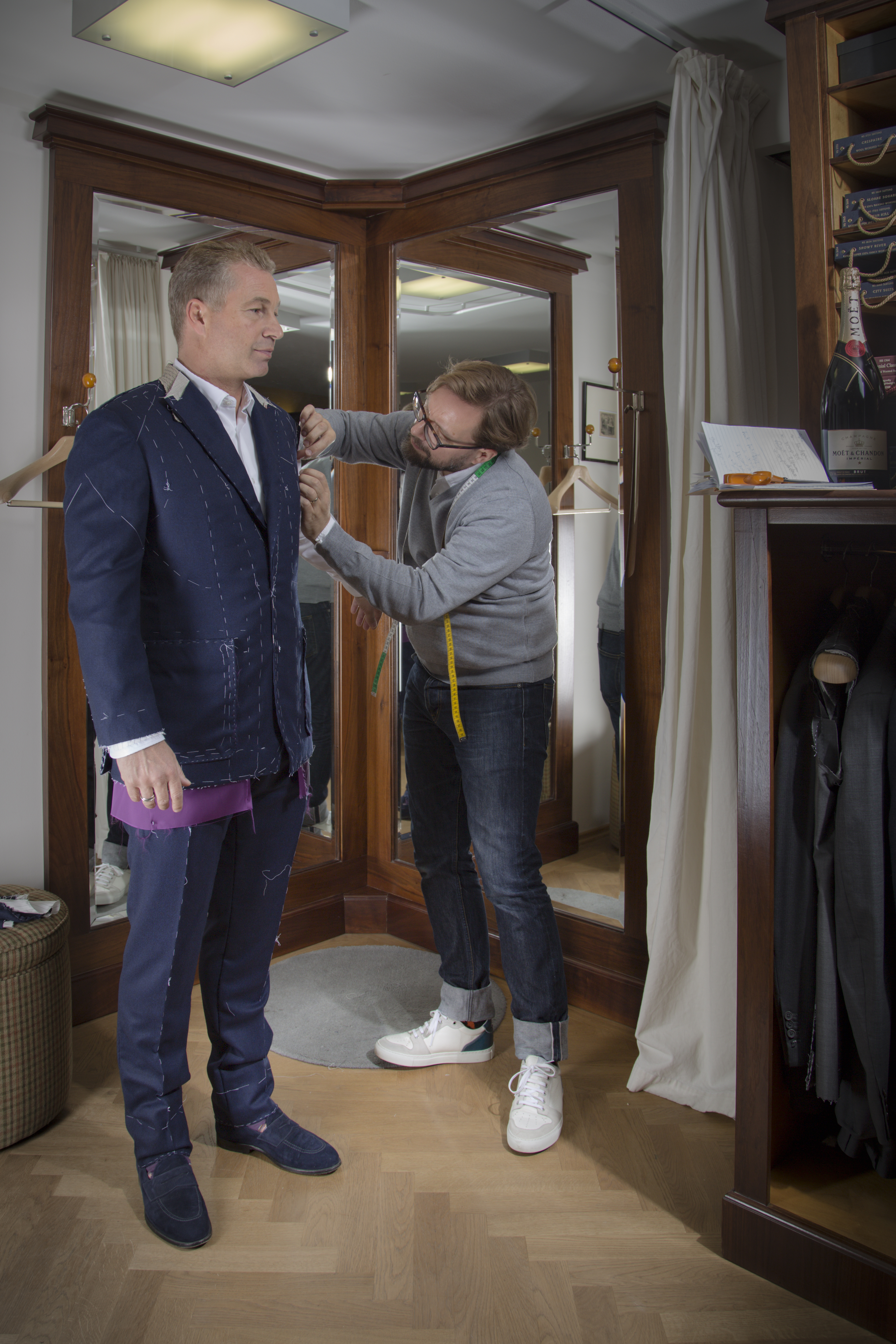The Consultation
When I meet a new customer I need to gather a lot of information. Character, measurements, body shape and proportions. Where the suit will be worn and what does the gentleman want to express with his clothes? Is it for work, a special occasion and for what season? This will indicate the weight, colour and pattern of the cloth and the suit: single or double breast, with or without waistcoat and a plain or pleat front trouser. With all the technical and design information I can move onto the next phase.

Pattern making
Great tailoring is a combination of accomplished cutting and beautiful sewing. My cutting technique is based, like most of London’s best bespoke tailors, on the F.R. Morris Tailor and Cutter system.
Using an array of body measurements and various formulas I draft a unique pattern for each client. The aim is to find a perfect balance such that each garment fall perfectly, allowing ease of movement while being elegant and not too roomy. From correcting differences in the shoulders and the chest, to creating a gloriously V shaped torso, having a bespoke suit made offers a wealth of options to highlight your best features and disguise some physical imperfections.

Fitting:
For each bespoke order I require to see the client for three fittings.
After I creating the individual pattern we prepare the first (toile) fitting. I review the: balance, proportion, lengths and overall silhouette. Following this, toile fitting, adjustments are made to this pattern and then a first baste is prepared with the customers chosen fabric. With the proper canvas now inside we can start to see the final shape of the jacket. We continue to refine the suit at the second fitting, when the client needs to be wearing a suitable shirt and shoes. This time I re-check the overall balance, proportion, shoulder line, sleeve pitch and button positions. Then again all the necessary modifications are transferred to the pattern and then the second, or pocket baste is prepared for the third fitting. The lower and inside pockets are made and linings basted in. Trousers also have their pockets made and long seams machined. The suit is starting to take its final shape. A final check fitting is made and then the order can be finished.

Sewing:
All true bespoke tailors use a similar system with multi layered canvases stitched together by hand. It is in the choice of the canvas and in the density of the stitching that the tailor’s style comes to the fore. This together with all the internal construction builds a jackets final and stable shape. Thousands of hand stitches go to create a true bespoke garment.
Fine hand finishing is the final touch that sets bespoke suits apart. Each tailor has their preferred style, but buttonholes should be worked by hand, linings felled in by hand and sleeves, collars and the edge stitching should be similarly done by hand.

Ironing:
Pressing follows, up to two hours of careful work to finally set the shape and remove all the marks from the temporary basting. Finally the buttons can be attached.
Five highly skilled craftspeople work more than eighty hours on each suit. All the production is carried out in house with machines being used only for the main seams.
When one is judging a suit the three fundamental things to look for are: harmony of shape and styling, a flattering cut and silhouette and a correct balance and proportion. Then comes the correct choice of cloth, appropriate trim and of course, expert construction and finishing. Only true bespoke tailoring can give this amount of attention to all aspects of making a suit. The drape of the sleeve, the line of the shoulder and how the collar and lapel roll to just above the top button without a hint of tension. You cannot even see most of the work, it is hidden inside. But it is the hours of patient hand stitching, shaping and pressing that sets bespoke tailoring apart. Only when you slip on a bespoke jacket can you fully appreciate the difference as it falls effortlessly into place and becomes part of you.
It should be in the self confidence of the wearer and the recognition of those “in the know”, rather that the applause of the crowd, that a true bespoke suit is appreciated.